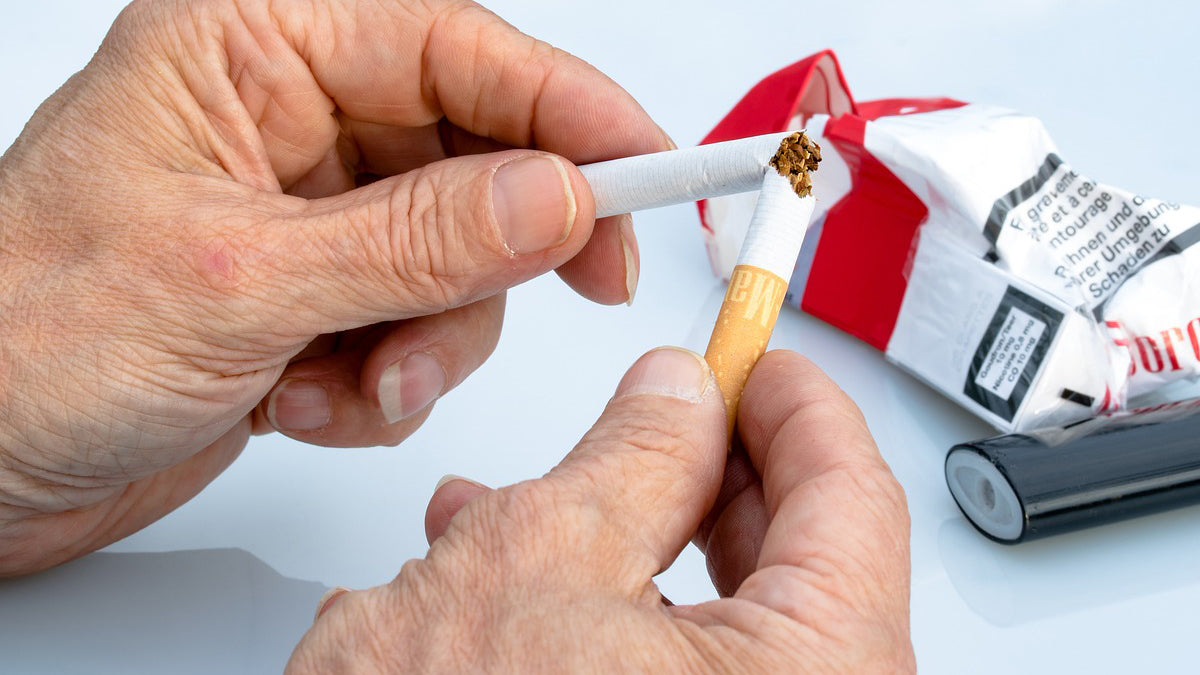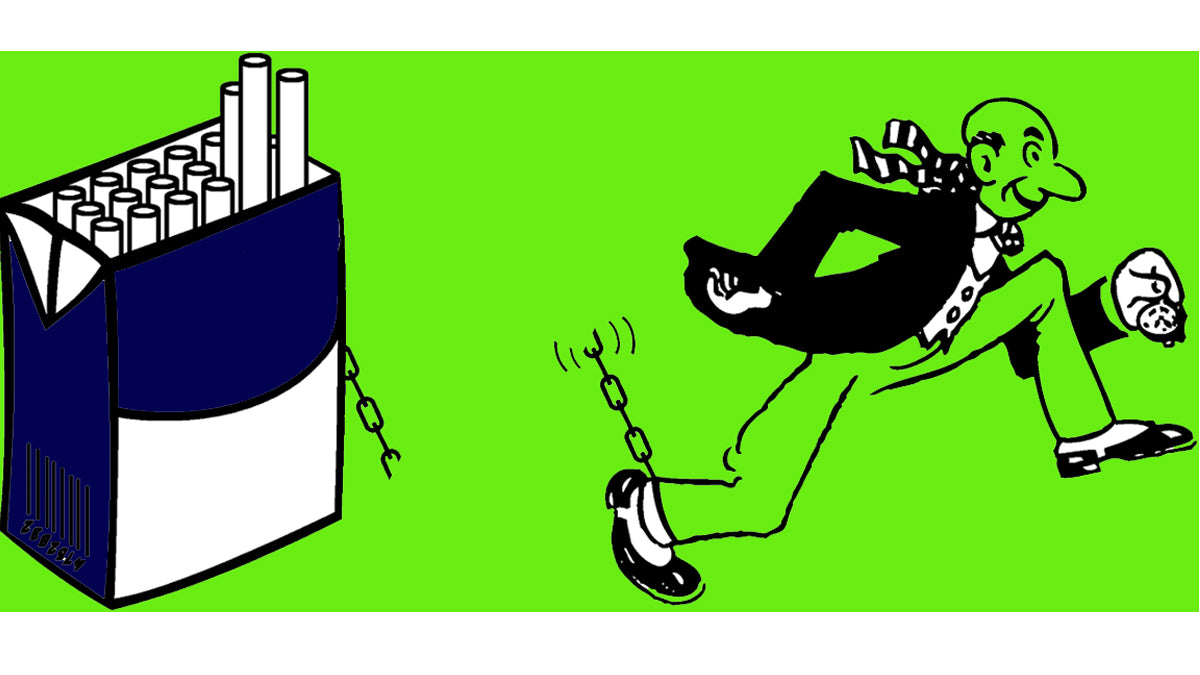Your Tobacco Harm Reduction Journey: How To Manage Cravings & What To Expect From NRT
In the journey to tobacco harm reduction, managing cravings is a critical aspect of smoking cessation. Quitting Smoking isn't always just about breaking the physical dependency; it also includes conquering the powerful physiological and Psychological Cravings often Accompanying Tobacco Use. This article explores why it's vital to effectively control smoking cravings during cessation and delves into the position of Nicotine Replacement Therapy (NRT) in this procedure.
How To Manage Cravings?
Cravings, those intense desires to smoke, are a common challenge when trying to quit. They occur due to physical nicotine addiction but are also heavily influenced by psychological triggers. Here's how to manage them effectively:
1. Understanding Why Smoking Cravings Occur During Cessation
Cravings are a natural component of the withdrawal process. When you stop smoking, your body and mind must acclimate to the absence of nicotine. It ushers to a range of withdrawal symptoms along with intense cravings. It's crucial to recognise that cravings are temporary and part of the healing process.
2. Effective Strategies for Managing Smoking Cravings
- Identify Triggers: Identify situations, places, or emotional states that trigger cravings. This self-awareness is the first step in managing them.
- Use Distractions: When a craving hits, engage in activities that divert your attention. Go for a walk, meditate, chew sugar-free gum, or immerse yourself in a hobby.
- Deep Breathing: Practice deep breathing Exercises to Reduce Cigarette Cravings and calm your nerves during cravings. Slow, deep breaths can help reduce the urge to smoke.
- Stay Hydrated: Drinking water throughout the day can assist in lessening the intensity of cravings. It also helps flush nicotine out of your system.
- Healthy Snacking: Opt for Healthy Snacks to Curb Cigarette Cravings, such as fruits, nuts, or vegetables. These can help satisfy oral cravings and provide a positive distraction.
3. Specific Techniques for Dealing with Intense Cravings
When cravings become particularly intense, consider these techniques:
- Positive Self-Talk: Remind yourself of your reasons for quitting and the benefits you'll gain. Positive self-talk can help reframe your perspective on cravings.
- Delay and Distract: Tell yourself you'll wait 10 minutes before giving in to a craving. During this time, engage in a distracting activity. Often, the urge will pass.
- Visualise Success: Imagine a future where you've successfully quit smoking. Visualisation can be a powerful tool for overcoming cravings.
How NRT Helps To Manage Smoking Cravings?
Nicotine Replacement Therapy (NRT) gives a lifeline to those searching for alleviation from cravings during their journey to quit smoking. NRT products deliver controlled doses of nicotine to the body, assisting in lessening withdrawal symptoms and cravings. NRT comes in various forms; nicotine replacement therapy gum, patches, lozenges, and inhalers are some of them.
- Nicotine Substitution: NRT products, like nicotine gum, patches, lozenges, inhalers, and nasal sprays, supply a managed quantity of nicotine to the bloodstream. This mimics the nicotine intake from smoking but eliminates exposure to tobacco's harmful tar and toxins.
- Reducing Withdrawal Symptoms: Nicotine withdrawal can cause a number of unpleasant signs, such as irritability, anxiety, restlessness, and robust cravings for a cigarette. NRT reduces those signs and symptoms by offering the body the nicotine it craves, which lessens the urge to smoke.
- Gradual Nicotine Reduction: NRT products are often available in different nicotine strengths. Smokers can start with a higher-strength product and gradually reduce the nicotine dose over time. This controlled tapering allows the body to adjust to decreasing nicotine levels, making it easier to quit altogether.
- Craving Control: NRT helps control cravings by providing a readily available source of nicotine. Users can use NRT immediately to ease the urge to smoke when a craving occurs. It helps break the behavioural aspect of smoking as well, as users replace the hand-to-mouth action with NRT use.
- Healthier Nicotine Delivery: NRT grants nicotine without the damaging toxins and carcinogens in tobacco smoke. It makes NRT products a more secure approach to nicotine intake and reduces the health dangers of smoking.
- Personalised Approach: NRT delivers a variety of product choices, letting individuals determine the form that works best for them. Some people prefer gum or lozenges, while others find nicotine patches or inhalers more effective. This personalisation increases the likelihood of success.
- Reduced Relapse Risk: NRT has been shown to reduce the risk of relapse among individuals who have quit smoking. By helping manage cravings, NRT supports long-term abstinence and minimises the chances of returning to smoking.
- Coping with Triggers: NRT can manage cravings triggered by specific situations or habits, such as stress, social interactions, or after a meal. This flexibility empowers individuals to address their unique smoking triggers effectively.
Common Side Effects of Using NRT
While NRT is generally safe, it can have some side effects. These might include:
- Mild Dizziness: Some users enjoy slight dizziness, which commonly subsides as the body accommodates the NRT product.
- Nausea: Occasional nausea is a probable side effect, particularly while using nicotine gum.
- Mouth Irritation: Nicotine gum or lozenges may lead to mouth irritation or a tingling sensation.
- Insomnia: Nicotine patches can sometimes interfere with sleep, causing mild insomnia. Using them as directed can help minimise this side effect.
Contraindications and Precautions When Using NRT
While NRT is appropriate for a bunch of people, there are a few contraindications and precautions to remember:
- Pregnancy: Pregnant women should talk with a healthcare professional earlier and get proper direction before starting with NRT products.
- Underlying Health Conditions: Individuals with certain health conditions should seek medical advice before using NRT.
- Allergies: If you have known allergies to NRT products, avoid using them.
- Medication Interactions: Some medications can interact with NRT, so discussing any existing medications with a healthcare provider is essential.
Combining NRT with Other Strategies
NRT can be a powerful tool when combined with other smoking cessation strategies. Behavioural therapies, support groups, and counselling can complement NRT, addressing physical and psychological aspects of addiction.
Conclusion
Managing cravings during smoking cessation is a challenging but conquerable task. You can successfully navigate a smoke-free life with the right strategies, including NRT. Recognise that cravings are brief and use them as possibilities to boost your commitment to a more fit, tobacco-free future. Always visit a healthcare expert whilst using NRT to make confident choices based on your desires. Your journey to a smoke-free life is a massive accomplishment, and each day unfastened by tobacco brings progressed fitness and wellness.
FAQs
Common triggers for cravings include stress, social situations, being around other smokers, and specific habits like after meals.
Managing cravings and quitting smoking involves various strategies, including using NRT, seeking support from friends and family, engaging in stress-reduction techniques, and identifying and avoiding triggers.
To stop smoking cravings, consider using NRT, engaging in physical activities, practising relaxation techniques, and seeking professional support, like counselling or therapy.
Pregnant or breastfeeding individuals should consult with a healthcare provider before using NRT, as the safety of these products during pregnancy and breastfeeding may vary.
While using NRT, consider making lifestyle changes like avoiding smoking triggers, staying active, and incorporating a balanced diet to support your journey towards quitting smoking.















